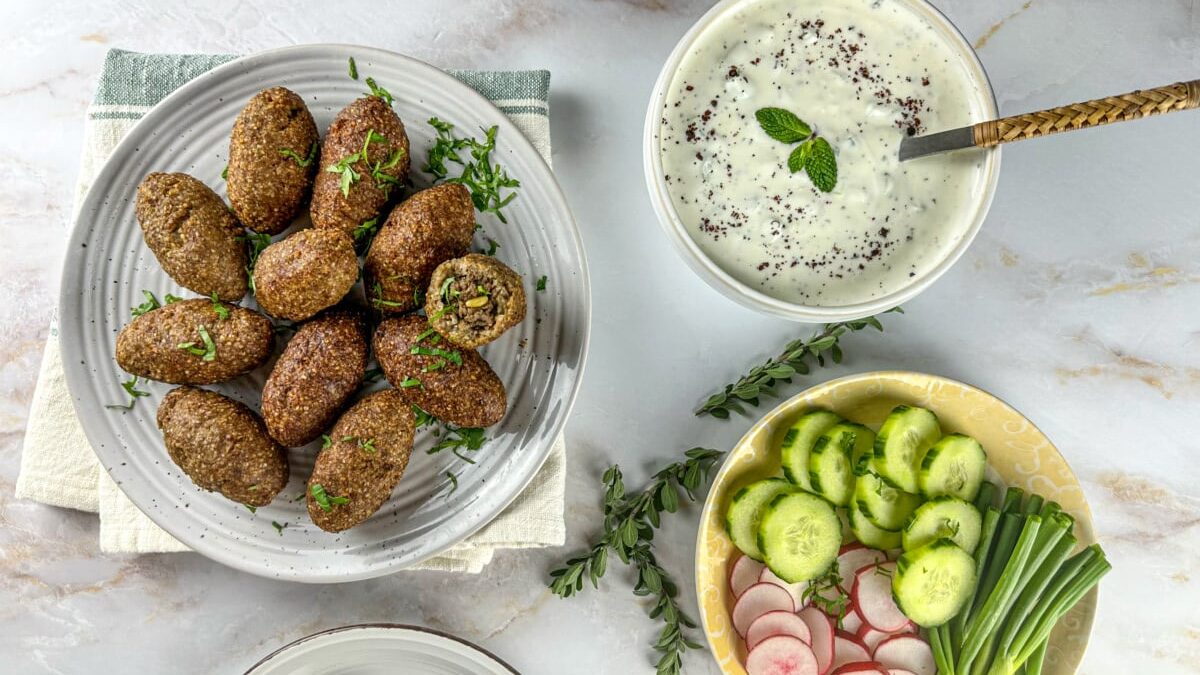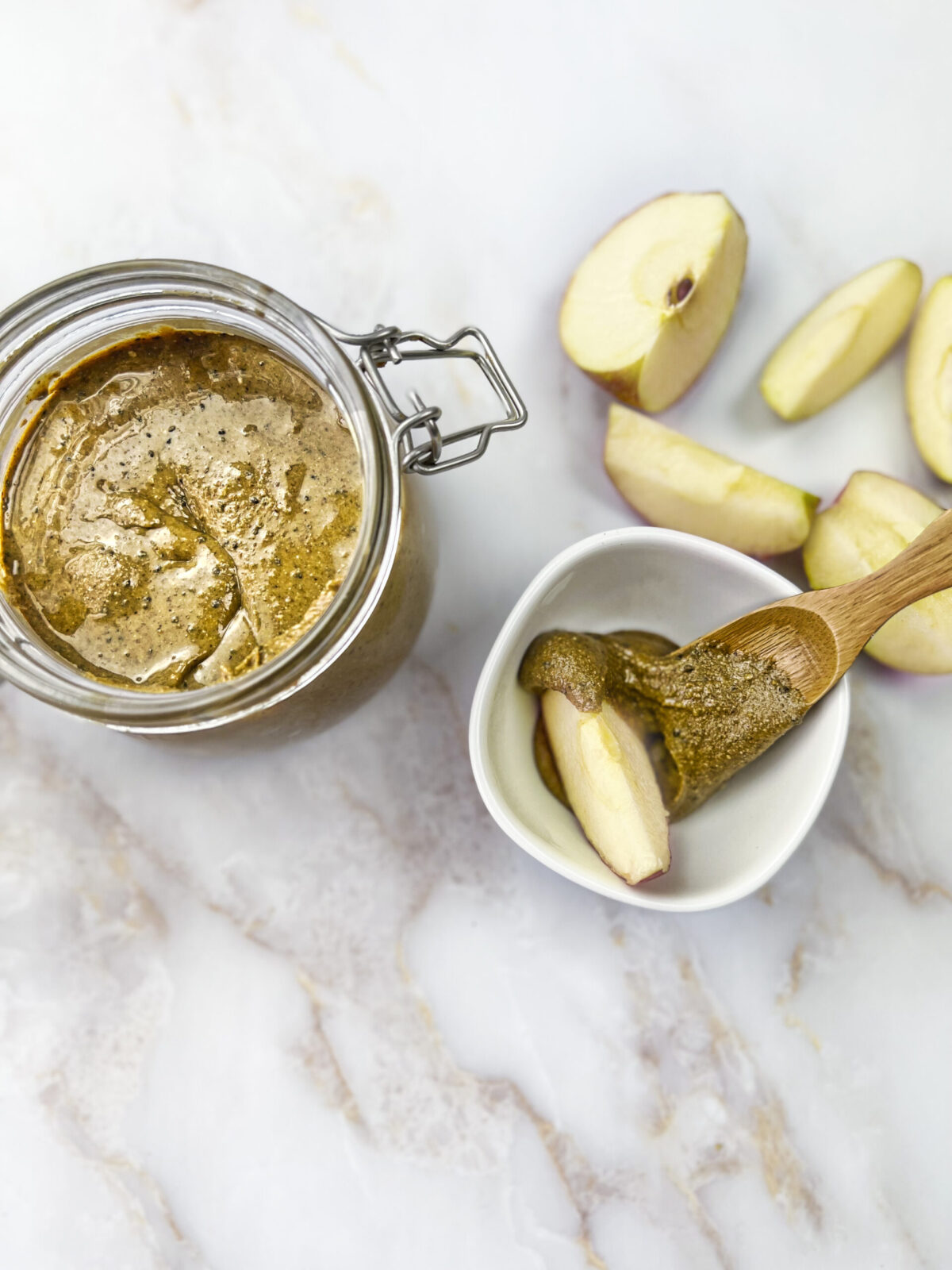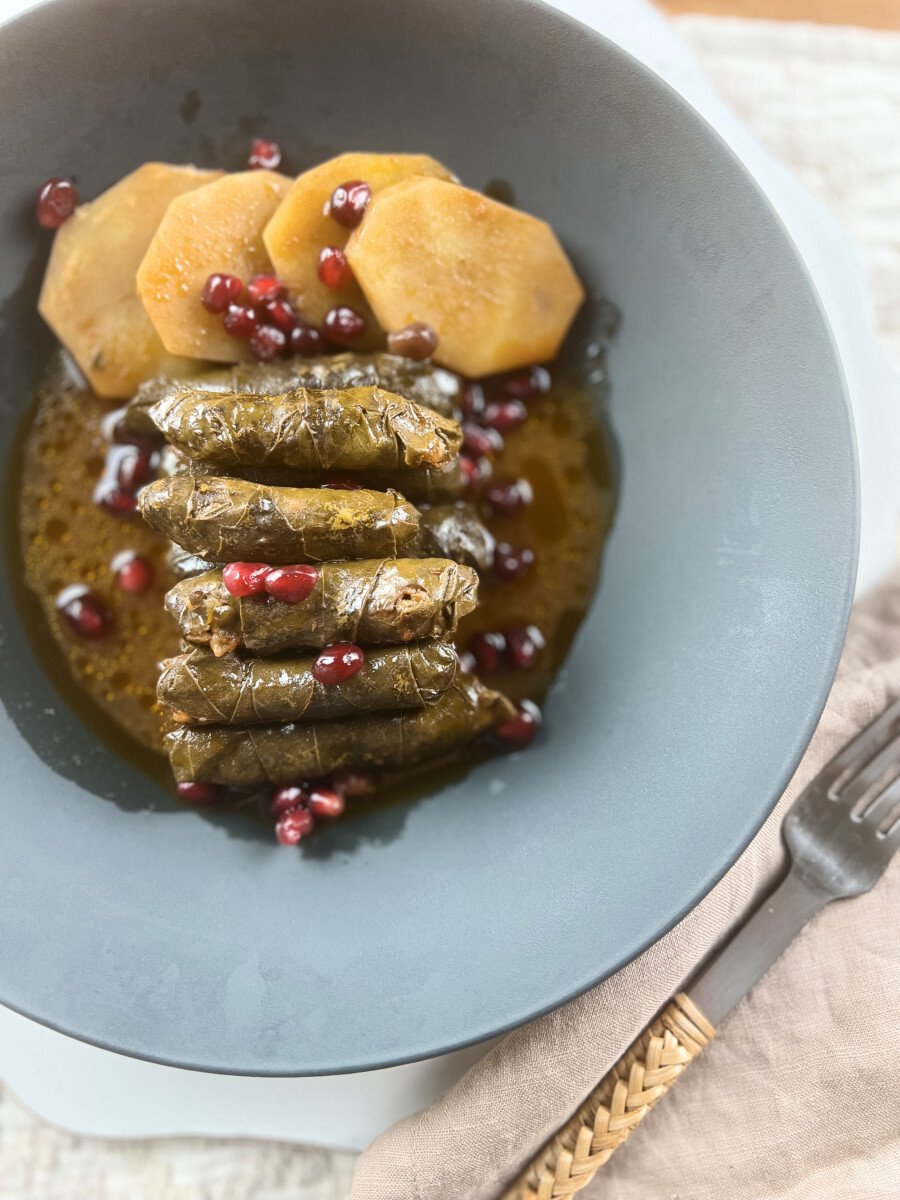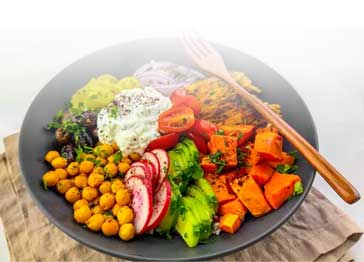The benefits of whole grains go far beyond taste — they’re a cornerstone of the Mediterranean diet and a key reason why eating whole grains supports heart health, longevity, and vibrant living. Growing up, the comforting aroma of freekeh, wheat, and bulgur filled our home. These weren’t merely staples; they carried family traditions and embodied a healthier way of life. From the nutty undertones of freekeh to the delightful chew of bulgur, each grain was a flavorful link to my heritage — and a reminder of why eating whole grains is still an important question with answers that span generations.

History of Whole Grains and Their Cultural Significance
Throughout history, whole grains have been more than just sustenance; they’ve been revered symbols across cultures. For many, they symbolized prosperity and fertility. Trade routes were often established based on exchanging these grains, fostering cultural interactions. Moreover, grains held a sacred space in various religious rituals, underscoring their profound impact on human civilization — and offering one of the earliest answers to why eat whole grains for both sustenance and cultural meaning.
Why Eat Whole Grains: Nutritional and Health Benefits
If you’ve ever wondered why to eat whole grains, the answer starts with their exceptional nutrition and rich, earthy flavors. They retain their bran and germ, becoming nutrient powerhouses packed with fiber, protein, vitamins, and antioxidants. This rich composition aids digestion, helps prevent constipation, and can even manage blood sugar levels by slowly releasing sugars into the bloodstream. Their role in reducing bad cholesterol underscores their importance for heart health. Furthermore, complex carbohydrates ensure prolonged satiety, potentially assisting in weight management — another reason why eating whole grains is such a smart choice for a balanced diet.
How to Choose Whole Grain Products for Maximum Benefits
When selecting whole grain products, it’s essential to be discerning to ensure you’re getting the full benefits. Here are some tips:
-
Read the Label: Look for “whole grain” or “100% whole grain.” Avoid misleading terms like “multigrain” or “stone-ground” unless verified as whole grain.
-
Check the Ingredients: The first ingredient should be a whole grain (whole wheat, whole oats, brown rice). Avoid products dominated by refined grains.
-
Consider the Fiber Content: Higher fiber often indicates higher whole grain content.
-
Avoid Excess Additives: Some whole grain products hide sugars, sodium, or unhealthy fats — opt for clean ingredient lists.
-
Notice Texture and Appearance: Whole grain bread and pasta are usually denser and darker than refined products.
-
Choose Trusted Brands: Reputable brands tend to maintain consistent quality.
-
Support Local: Locally sourced whole grains often taste fresher and have fewer additives.
By following these tips, you’ll make smarter choices, incorporate more whole grains into your diet, and enjoy their full range of health benefits.
Incorporating Whole Grains into Everyday Mediterranean Cooking
Whole grains can quickly become a delightful part of your daily diet. Here’s how to introduce them seamlessly:
Breakfast Boost
Start your day with a nutrient-rich whole grain bowl. Combine cooked quinoa or millet with fresh fruit, nuts, and a drizzle of honey or maple syrup for a fiber-packed, energizing breakfast.
Snack Smart
Pop whole corn kernels for a high-fiber snack, or top whole-grain rice cakes with almond butter and banana slices for a satisfying bite between meals.
Versatile Side Dishes
Swap white rice for brown rice, barley, or farro. These hearty grains pair beautifully with Mediterranean stews, stir-fries, and roasted vegetables.
Upgrade Your Salad
Add cooked bulgur, wheat berries, or freekeh to salads. They provide a satisfying chew and soak up flavorful dressings while boosting fiber and nutrients.
Reimagine Desserts
Use oats to create no-bake energy balls with dates, nuts, and cocoa powder, or make creamy rice pudding with brown rice for a wholesome twist.
Sneak Them Into Soups
Add barley or wild rice to soups for extra texture, nutrients, and staying power.
Whether for breakfast, lunch, or dinner, each of these ideas shows why eating whole grains is both practical and delicious in a modern kitchen
Types of Mediterranean Whole Grains and Their Benefits
Before we explore each variety, it’s worth noting that the health benefits listed for each one highlight why eating whole grains is a cornerstone of the Mediterranean diet.
Wheat Berries: A Mediterranean Whole Grain Rich in Benefits
Description: Wheat berries — the purest form of whole wheat — are chewy when cooked and carry a naturally nutty flavor. This Mediterranean favorite appears in both sweet and savory dishes, adding a hearty, satisfying component to meals.
Usage and Pairings: Beloved across cultures, wheat berries are ideal for dishes that call for lasting energy and robust texture. They pair beautifully with:
-
Fresh herbs, roasted vegetables, and tangy feta cheese
-
Dried fruits and nuts for a sweeter twist
-
Savory seasonings like garlic, pepper, and sea salt
-
Sweet spices like cinnamon with a drizzle of honey
Basic Cooking Guide:
-
Ratio: 1 part wheat berries to 4 parts water or broth
-
Soak: Optional 20–30 minutes to reduce cooking time
-
Rinse: Always wash before cooking
-
Toast: Light toasting enhances the nutty flavor (optional)
-
Simmer: 45–60 minutes until desired chewiness
-
Yield: 1 cup dry wheat berries ≈ 2.5 cups cooked
Storage Tips:
-
Cooked: Refrigerate for up to 5 days
-
Dry: Store in a cool, dark place for up to 1 year
-
Batch prep: Cook in bulk and freeze in portions for quick meal prep
Health Benefits of Wheat Berries:
-
Fiber Boost: Supports digestion, promotes heart health, helps regulate blood sugar
-
Plant Protein: Excellent plant-based protein source for muscle maintenance
-
Vitamin E: Antioxidant protection against oxidative stress
-
Heart Health: Phytochemicals that may reduce heart disease risk
Spelt: An Ancient Mediterranean Grain with Nutty Benefits
Description: Spelt is a beloved ancient grain with roots in Roman history. Known for its nutty, slightly sweet flavor and pleasantly chewy texture, this whole grain adapts beautifully to both modern and traditional Mediterranean dishes.
Usage and Pairing: Spelt can replace rice or quinoa in many recipes. It pairs especially well with:
-
Hearty vegetables like mushrooms or kale
-
Fresh herbs such as rosemary, thyme, and garlic
-
Mediterranean cheeses like feta or goat cheese
For a lighter introduction to spelt’s unique flavor, blend it half-and-half with another grain when cooking.
Basic Cooking Guide:
-
Ratio: 1 part spelt to 2.5 parts water or broth
-
Soak: Optional (1 hour or overnight) to reduce cooking time
-
Rinse: Always wash before cooking
-
Toast: Optional for deeper nutty flavor
-
Simmer: 40–60 minutes until tender
-
Yield: 1 cup dry spelt ≈ 3 cups cooked (serves 4–5)
Storage Tips:
-
Cooked: Store in an airtight container in the refrigerator for up to 5 days
-
Uncooked: Keep in a cool, dry place for several months
Health Benefits of Spelt:
-
Nutrient-Rich: Good source of iron, magnesium, and zinc
-
Digestive Health: High fiber supports regularity and gut health
-
Blood Sugar Regulation: Fiber slows glucose release into the bloodstream
-
Immune Support: Contains thiamine, important for immune function
Barley: A Nutritious Mediterranean Grain with Ancient Roots
Description: Barley is one of the Mediterranean’s oldest cultivated grains, cherished for its slightly nutty flavor and pleasantly chewy texture. Its versatility has made it a staple in soups, stews, salads, and even risotto-style dishes.
Usage and Pairing: Barley pairs beautifully with a variety of Mediterranean flavors, including:
-
Root vegetables like carrots and parsnips
-
Leafy greens such as spinach and chard
-
Aromatic herbs like bay leaves, thyme, and rosemary
-
Mushrooms or roasted vegetables for earthy, savory depth
For a refreshing dish, try Herbed Mediterranean Barley Salad with Corn and Cherries — a vibrant way to enjoy this ancient grain.
Basic Cooking Guide:
-
Ratio: 1 part barley to 3 parts water or broth
-
Soak: Optional; overnight soaking reduces cooking time
-
Rinse: Quickly wash to remove dust or debris
-
Toast: Optional, but enhances the nutty aroma
-
Simmer:
-
Pearled barley: 25–30 minutes
-
Hulled barley (whole grain): 40–60 minutes
-
-
Yield: 1 cup dry barley ≈ 3.5 cups cooked (serves 4–6)
Storage Tips:
-
Cooked: Refrigerate in an airtight container for up to 4 days
-
Uncooked: Store in a cool, dry place for several months
Varieties:
-
Pearled Barley: Husk and bran removed, cooks faster but less fiber
-
Hulled Barley: Whole grain with bran layer intact, more nutritious but longer cooking time
Health Benefits of Barley:
-
-
Vitamin & Mineral Rich: Excellent source of magnesium and other essential nutrients
-
Digestive Aid: High fiber supports healthy digestion
-
Appetite Control: Promotes fullness and helps reduce overeating
-
Heart Health: May lower cholesterol and support cardiovascular wellness
-
Bulgur: A Quick-Cooking Mediterranean Whole Grain
Description: Bulgur is a fast-cooking form of whole wheat that’s been cleaned, parboiled, and dried. With its light, nutty flavor and tender texture, bulgur is a staple in Levantine and Mediterranean cooking — perfect for quick, wholesome meals.
Usage and Pairing: Best known for its starring role in tabbouleh, bulgur also shines in:
-
Pilafs and grain bowls
-
Soups and stews
-
Stuffed vegetables
-
Mediterranean-inspired salads
It pairs beautifully with:
-
Fresh herbs like parsley and mint
-
Flavors such as lemon, garlic, and olive oil
-
Grilled vegetables or spiced meats
Try it in:
-
Mediterranean Grain Bowl – Spicy Bulgur Pilaf
-
Lebanese Mujadara – A Classic Middle Eastern Dish
-
Ultimate Stuffed Acorn Squash (Vegan)
-
Traditional Tabbouleh Salad
Basic Cooking Guide:
-
Ratio: 1 part bulgur to 2 parts water or broth
-
Soak: Not required for fine grains — just pour boiling water and let sit 10–20 minutes
-
Rinse: Optional quick rinse if preferred
-
Toast: Optional for richer flavor
-
Cooking Time: 10 minutes (fine) to 20 minutes (coarse)
-
Yield: 1 cup dry bulgur ≈ 2.5–3 cups cooked (serves 4–5)
Storage Tips:
-
Cooked: Refrigerate in a sealed container for up to 5 days
-
Dry: Store in a cool, dry place for several months
Health Benefits of Bulgur:
-
Low in Fat: Great for heart-healthy eating
-
Mineral-Rich: High in manganese, magnesium, and iron
-
Plant Protein Source: Supports balanced diets
-
Heart Health: Fiber may help reduce cholesterol and heart disease risk
Farro: A Nutritious Ancient Mediterranean Grain
Description: Farro is a collective term for three ancient wheat varieties — einkorn, emmer, and spelt — prized in Tuscan and Italian cooking for centuries. With its chewy texture, nutty flavor, and rustic appearance, farro offers both hearty satisfaction and deep cultural heritage.
Usage and Pairing: Farro is a versatile whole grain that works beautifully in:
-
Mediterranean salads and grain bowls
-
Creamy risottos and hearty soups
-
Seasonal vegetable sides and even desserts
It pairs well with:
-
Mushrooms, root vegetables, and leafy greens
-
Robust cheeses like feta or goat cheese
-
Fresh herbs such as rosemary or thyme
-
Aromatics like garlic, onion, and olive oil
Recipe to Try:
Pearl Farro Delight – A cozy winter squash dish with Mediterranean flair.
Basic Cooking Guide:
-
Ratio: 1 part farro to 2.5–3 parts water or broth
-
Soak: Overnight or at least a few hours to shorten cooking time
-
Rinse: Always wash before cooking
-
Toast: Optional for a richer, earthy flavor
-
Simmer: 25–40 minutes, depending on whole, semi-pearled, or pearled farro
-
Yield: 1 cup dry farro ≈ 2.5–3 cups cooked (serves 4–5)
Storage Tips:
-
Cooked: Refrigerate in an airtight container for up to 7 days
-
Dry: Store in a cool, dry place for several months
Health Benefits of Farro:
-
Antioxidant-Rich: Contains fiber, B vitamins, and antioxidants for immunity and heart health
-
Protein Powerhouse: Great plant-based protein source
-
Digestive Support: High fiber supports healthy digestion
-
Immunity Boost: Provides zinc, essential for immune function
Freekeh: A Smoky, Nutrient-Rich Mediterranean Whole Grain
Description: Freekeh is an ancient wheat grain harvested while still young and green, then roasted to create its signature smoky flavor and chewy texture. A staple in Middle Eastern and Mediterranean cuisine for centuries, freekeh offers both rich taste and exceptional nutrition.
Usage and Pairing: Freekeh is a versatile whole grain perfect for:
-
Pilafs and warm grain bowls
-
Hearty soups and stews
-
Mediterranean salads with fresh herbs
It pairs beautifully with:
-
Lemon, mint, and pomegranate
-
Roasted vegetables, lamb, or chicken
-
Seasonings such as cumin, coriander, garlic, and sumac
Recipe to Try:
Lamb and Freekeh Soup – The ultimate hearty dish for comfort and flavor.
Basic Cooking Guide:
-
Ratio: 1 part freekeh to 2.5 parts water or broth
-
Soak: Optional; a few hours shortens cooking time
-
Rinse: Wash thoroughly to remove any chaff or dust
-
Toast: Optional; enhances smoky notes
-
Simmer: 20–25 minutes (whole grain may take slightly longer than cracked)
-
Yield: 1 cup dry freekeh ≈ 3 cups cooked (serves 4–5)
Storage Tips:
-
Cooked: Refrigerate in an airtight container for up to 6 days
-
Dry: Store in a cool, dry place for several months
Health Benefits of Freekeh:
-
Weight Management: High in protein and fiber for lasting fullness
-
Low Glycemic Index: Supports blood sugar control, ideal for diabetics
-
Heart Health: Fiber helps promote cardiovascular wellness
-
Vitamin-Rich: Packed with B vitamins for energy and overall health
Quinoa: A Protein-Packed Mediterranean-Adopted Super Grain
Description: Quinoa, though native to the Andean region of South America, has been warmly embraced in Mediterranean cuisine for its nutritional powerhouse status. Technically a seed, quinoa is considered an ancient grain and is unique for being a complete protein, containing all nine essential amino acids — making it an excellent choice for vegetarians, vegans, and anyone seeking plant-based protein.
Usage and Pairing: Quinoa’s mild, nutty flavor and fluffy texture make it ideal for:
-
Mediterranean salads with olives, feta, and tomatoes
-
Warm grain bowls or pilaf-style side dishes
-
Breakfast bowls with fruits, nuts, and honey
-
Latin-inspired dishes with beans, corn, and avocado
Season with lime, cumin, chili, or fresh herbs like cilantro for bold flavor.
Basic Cooking Guide:
-
Ratio: 1 part quinoa to 2 parts water or broth
-
Soak: Optional; 15–30 minutes can reduce bitterness from saponins
-
Rinse: Always wash thoroughly to remove saponin coating
-
Toast: Optional; toasting in a skillet enhances nutty flavor
-
Simmer: 15–20 minutes until liquid is absorbed and germ spirals are visible
-
Yield: 1 cup dry quinoa ≈ 3 cups cooked (serves 4–5)
Storage Tips:
-
Cooked: Store in an airtight container in the refrigerator for up to 1 week
-
Dry: Keep in a cool, dry place for several months
Varieties:
White quinoa is mild and fluffy, while red and black quinoa offer slightly earthier flavors and a crunchier texture.
Health Benefits of Quinoa:
-
Complete Protein: All nine essential amino acids in one plant food
-
Fiber-Rich: Supports digestion and satiety
-
Antioxidant Powerhouse: Helps combat oxidative stress
-
Diabetes-Friendly: Low glycemic index for better blood sugar control
Couscous: A Light and Fluffy North African Grain Staple
Description: Couscous, made from semolina wheat, is a light and fluffy grain that has been a North African kitchen essential for centuries. Quick to prepare and endlessly versatile, couscous serves as a perfect base for Mediterranean-inspired dishes, soaking up flavors beautifully.
Usage and Pairing: Thanks to its mild flavor and airy texture, couscous works well with:
-
Spicy Moroccan or Tunisian stews
-
Fresh herb salads with parsley, mint, and lemon
-
Grilled meats and roasted vegetables
-
Sweet additions like dried fruits and nuts for a savory-sweet mix
Basic Cooking Guide:
-
Ratio: 1 part couscous to 1.5 parts boiling water or broth
-
Soak: Not required
-
Rinse: Not necessary for most varieties
-
Toast: Optional; enhances nutty undertones
-
Cooking Time: 5–10 minutes — cover and let stand off the heat after adding boiling liquid
-
Fluff: Use a fork to separate grains and avoid clumping
-
Yield: 1 cup dry couscous ≈ 3 cups cooked
Storage Tips:
-
Dry: Store in a cool, dry place for up to 1 year
-
Cooked: Refrigerate in an airtight container for up to 1 week
Health Benefits of Couscous:
-
Quick Energy Source: Provides easily digestible carbohydrates
-
Protein Punch: Modest protein content, boosted when paired with legumes or meat
-
Nutrient-Rich: Contains selenium, B vitamins, and other essential minerals
Cooking Mediterranean Whole Grains to Perfection
In all these cooking methods, remember the key: combine grain and liquid, bring it to a boil, reduce the heat, cover, and let it simmer — just as my mother and grandmother did, letting the aroma and taste tell a story of tradition, health, and culinary delight.
Tip: Check a little earlier than the recommended cooking time to avoid overcooking or undercooking. The goal is the perfect texture — tender, with just a hint of bite.
Why Mediterranean Whole Grains Deserve a Place in Your Kitchen
Each grain in this guide carries centuries of history, distinct flavors, and valuable health benefits — from heart health and digestion support to plant-based protein and antioxidants. These are just some of the many benefits of whole grains that make them a cornerstone of the Mediterranean diet.
If you’ve ever wondered why to eat whole grains, the answer is simple: they offer delicious variety while supporting long-term wellness. So why not roll up your sleeves and cook with one of these grains this week? Start with a recipe here on the blog, or create your own twist on a traditional dish.
For deeper learning, explore:
-
Whole Grains Every Day, Every Way by Lorna Sass
-
Ancient Grains for Modern Meals by Maria Speck
And don’t forget — I’d love to see your creations! Share your recipes, questions, or photos in the comments below. As we close this chapter, remember — the treasures of Mediterranean cuisine are endless. More recipes, stories, and insights await in upcoming posts. Until then, happy cooking!
Further Reading:












